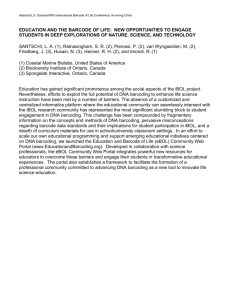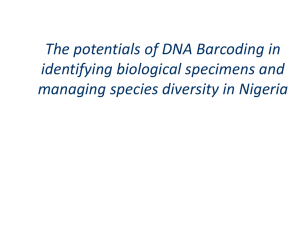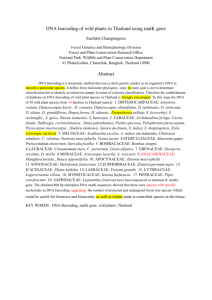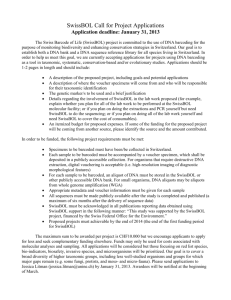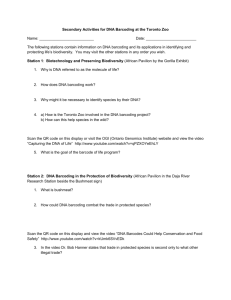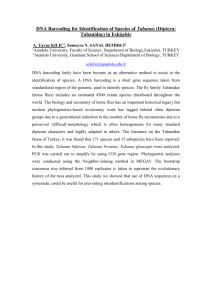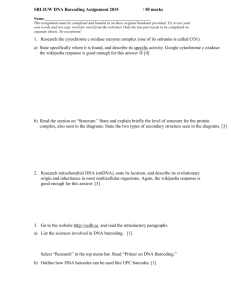DNA Barcoding Information Form
advertisement
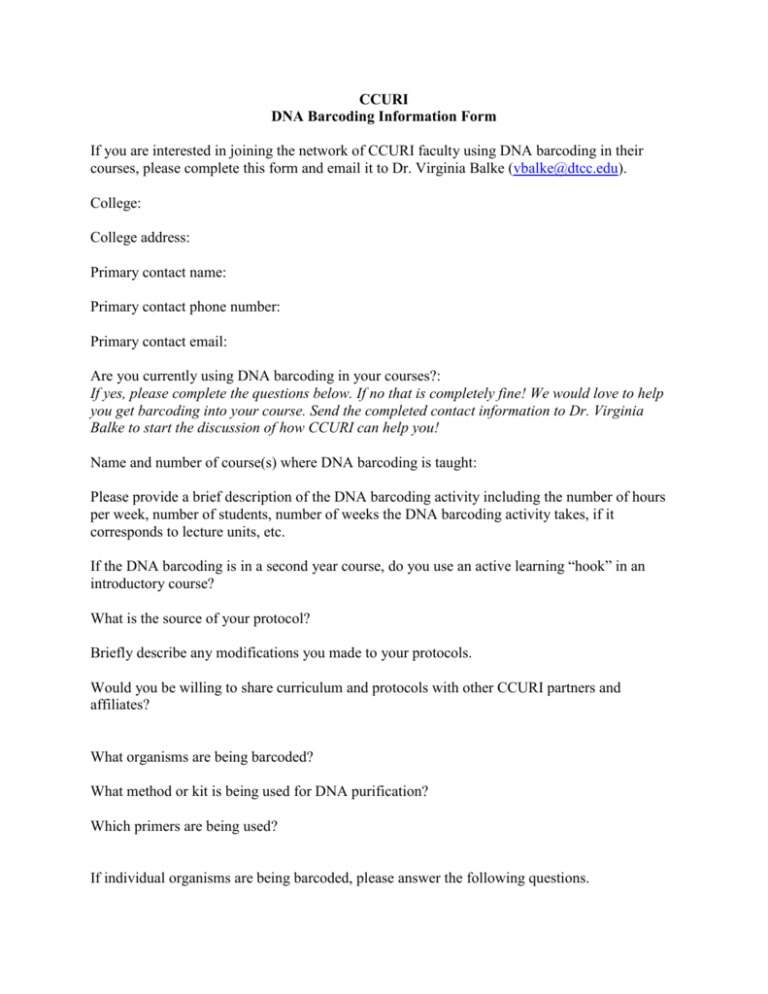
CCURI DNA Barcoding Information Form If you are interested in joining the network of CCURI faculty using DNA barcoding in their courses, please complete this form and email it to Dr. Virginia Balke (vbalke@dtcc.edu). College: College address: Primary contact name: Primary contact phone number: Primary contact email: Are you currently using DNA barcoding in your courses?: If yes, please complete the questions below. If no that is completely fine! We would love to help you get barcoding into your course. Send the completed contact information to Dr. Virginia Balke to start the discussion of how CCURI can help you! Name and number of course(s) where DNA barcoding is taught: Please provide a brief description of the DNA barcoding activity including the number of hours per week, number of students, number of weeks the DNA barcoding activity takes, if it corresponds to lecture units, etc. If the DNA barcoding is in a second year course, do you use an active learning “hook” in an introductory course? What is the source of your protocol? Briefly describe any modifications you made to your protocols. Would you be willing to share curriculum and protocols with other CCURI partners and affiliates? What organisms are being barcoded? What method or kit is being used for DNA purification? Which primers are being used? If individual organisms are being barcoded, please answer the following questions. What percentage samples yield good amplicon? Which kit is being used for amplicon clean up? What percentage amplicons yield good sequences? For samples that do not yield good sequences, what is the main problem (such as short or messy reads, Wolbachia, etc)? If a mixture of sequences are being analyzed (such as in feces), please answer the following questions. What is the source of the DNA? What method or kit is being used for cloning? What method or kit is being used to purify plasmid? What percent plasmids yield good sequence? Does the percentage of representative sequences come back as expected? Where is the sequencing being performed? What is the cost? What is the average turn-around time? What is the average length of good read? What program is being used to analyze the sequences? Do you have access to an entomologist who can assist with species ID and vouchers? Would you like to publish in GenBank or BOLD?

